As mentioned in yesterday’s post, we were impressed with this state park located in the hills just outside of Huntsville, even more so in the daylight. Waking up this morning we explored a small part of the park and took a few photos before heading down the hill to learn about rockets.
Sites have lots of distance between them and the facilities were modern and clean.
The original park was built as part of the Civilian Conservation Corp and a small museum building shows that history.
U.S. Space and Rocket Center
Driving through Huntsville you can’t help but notice the Saturn V rocket standing near the freeway. Parking between Space Camp and the US Space and Rocket Center there is no question that this is a hub of space exploration.
Training for tool use underwater is as close to weightlessness as one can get on earth.
We waited for the International Space Station tour and no one else came. Beth and I had a private tour of the station mock-up used for training and education. The labels on doorways help the crew orient themselves in their microgravity environment.
“Bedroom” on the ISS
Controls and monitors for Canadarm II, the robotic arm used on the station. The name makes it obvious which nation supplied the device.
Robonaut was under development for helping on the station, but funding is not currently available.
Outside view of ISS modules
An astronut?
Beth in the viewing port of the International Space Station. This always points towards the earth and is one of the few places astronauts can look out of the station.
We have learned to take advantage of tours and docents at any museum as they lend personalized stories and insights that you can’t get from the exhibits alone. Here you can take a bus tour of the nearby Marshall Space Flight Center where much of the US Rocket engine technology was, and is, being developed. ID is needed as the tour passes onto the restricted NASA property and Redstone Military Base.
Our first stop was the International Space Station Operations Center. This large model of the station is suspended from the ceiling in the main stairwell.
Controllers are in constant contact with the International Space Station. This group also acts as a back-up for Houston if something were to happen to that facility.
There are officials for everything, including one whose job is to know where every part and piece is currently located.
Flags of the countries contributing to the ISS are illuminated in the control room ceiling. This facility is manned year-round, 24 hours a day.
The Redstone test pad was our next stop. This is where Werner Von Braun and other scientists tested early rocket engines. Our tour guide, yes a retired rocket scientist, told us that there wasn’t enough funding to build the pad as designed so shortcuts were made like making this observation room out of three railroad tank cars. It was amazing to me how close the rocket was to where the observers stood.
The original redstone test site.
A larger test site, where Saturn rocket engines were tested is in the distance. The foreground building houses the diesel engines used to pump water to cool the test pad from the heat of the rocket exhaust.
The Redstone Arsenal has its own rocket park. The center rocket shows the distinctive markings identifying it as a German V2. Von Braun is quoted as saying that the rocket worked perfectly, it just hit the wrong planet.
Our final stop was at the Propulsion Research and Development Center. Outside were several unique engines. This one is a Linear Aerospace Engine, a design without a rocket nozzle that develops 204,420 pounds of thrust.
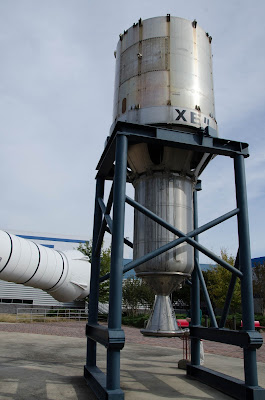
This Nerva XE engine is a nuclear engine designed as an upper stage booster for the Saturn V developed in the 1960’s for interplanetary exploration.
Our NASA bus in front of the Propulsion Research and Development Center. The $15 tour was well worthwhile.
Back at the museum we had lunch in the van and then revisited the Saturn V vertical display.
Indoors in the newest building at the museum, a Saturn V is displayed horizontally. Stages are separated so the individual engines can be seen. Took a few photos as painting guides for our son, who has been building models of these rockets.
Floor graphics make it clear this is the second stage.
An apollo capsule with emergency escape rocket mounted.
The last exhibit was a large scale model of the next generation launch vehicle, incorporating parts from the Saturn and Shuttle programs.
Before we left, Beth demonstrated her iron stomach as the lone passenger in the high G demonstrator. We were impressed that there was no extra charge for any of the simulators.
Joe Wheeler State Park
Spending most of the day at the Space Center, we opted to find a nearby park for the night. Joe Wheeler State Park had a spot for us with a view of the lake. Alabama State Parks are expensive, especially if you are only staying one night, but have all been very nice.
The view from our site as another fun day came to an end.
 This Nerva XE engine is a nuclear engine designed as an upper stage booster for the Saturn V developed in the 1960’s for interplanetary exploration.
This Nerva XE engine is a nuclear engine designed as an upper stage booster for the Saturn V developed in the 1960’s for interplanetary exploration.
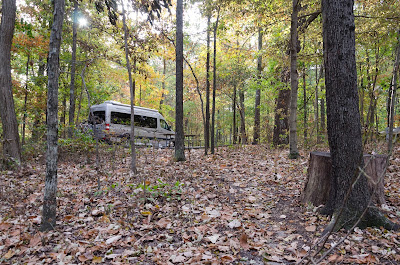
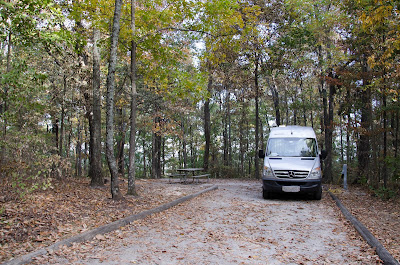
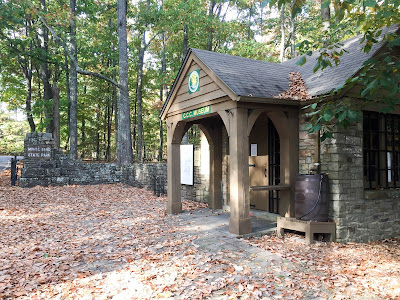
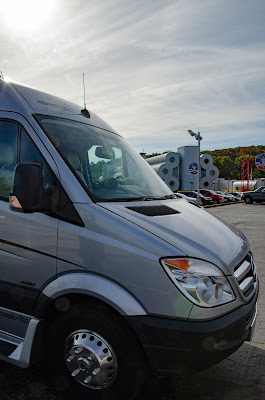
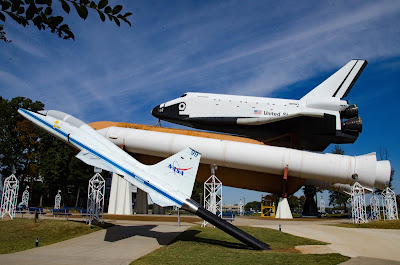
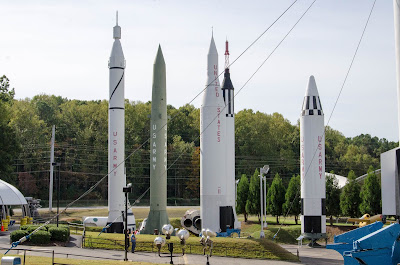
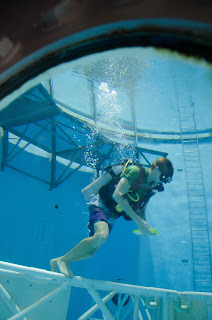
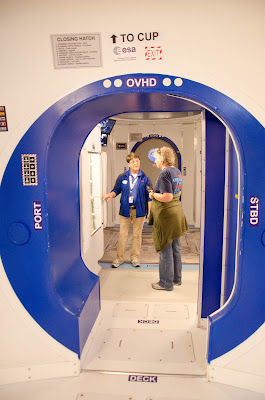
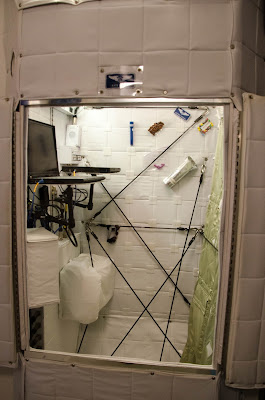
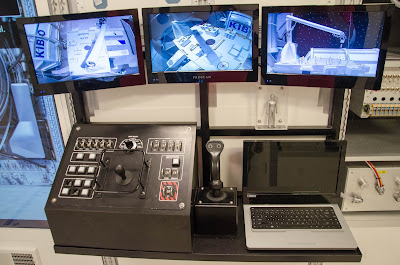
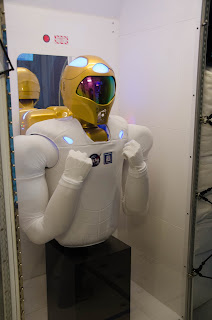
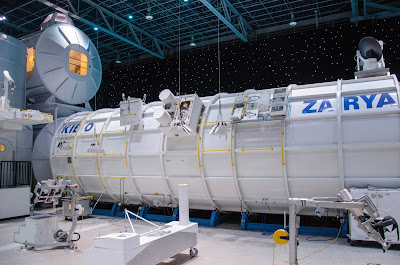
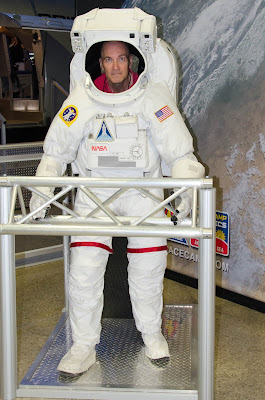
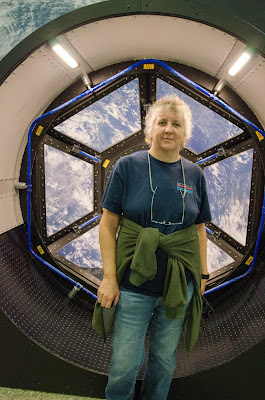

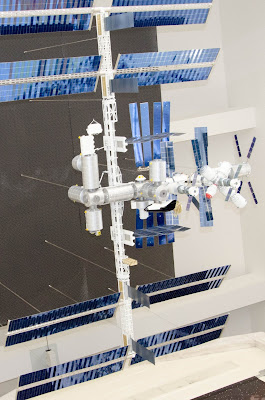
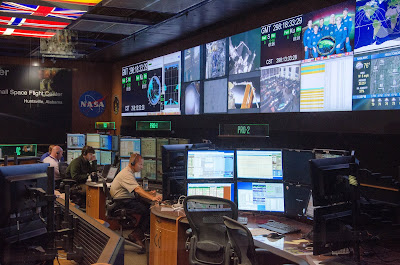
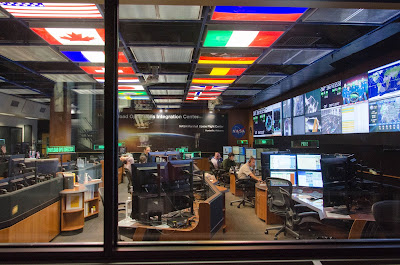
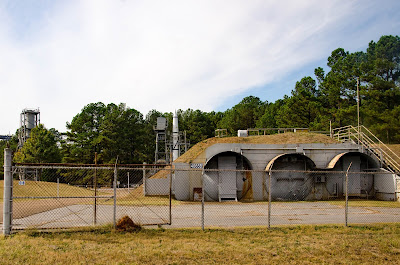
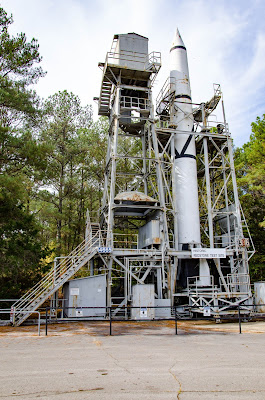
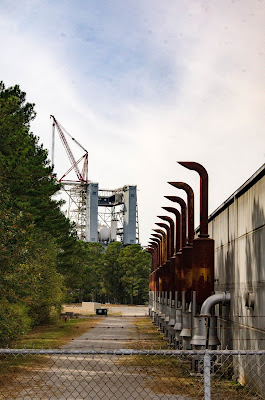
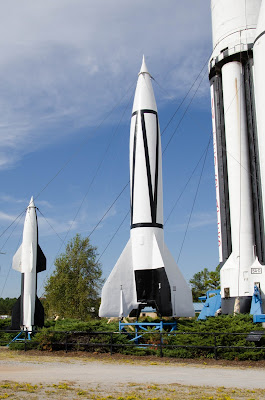
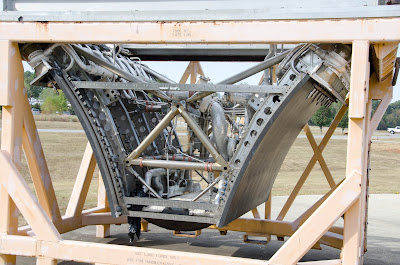
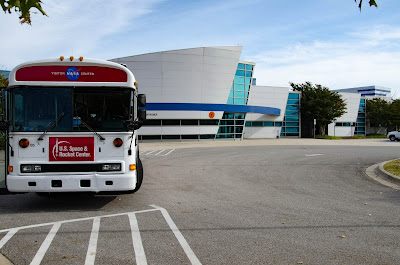
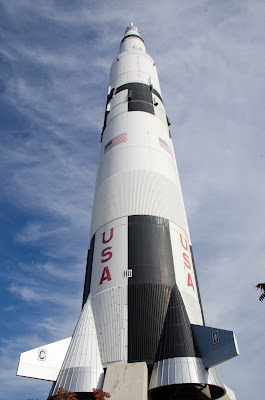
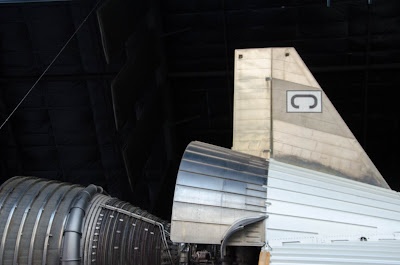
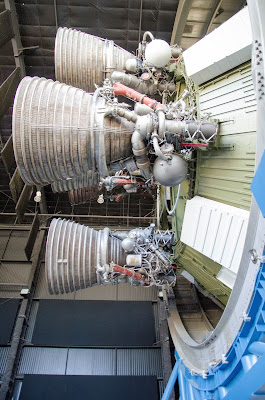
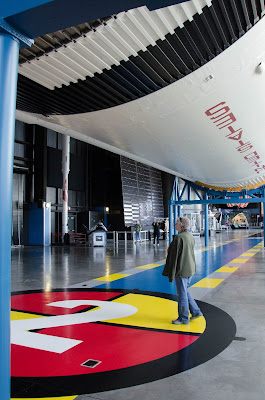
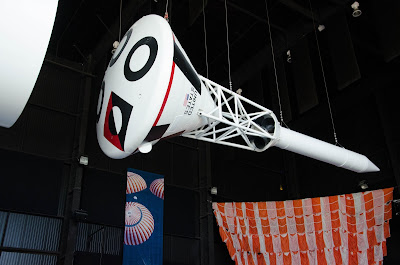

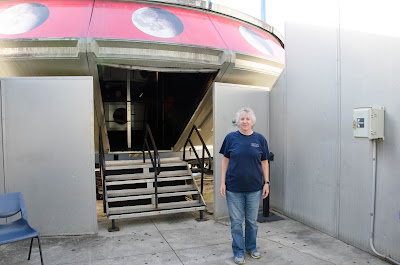
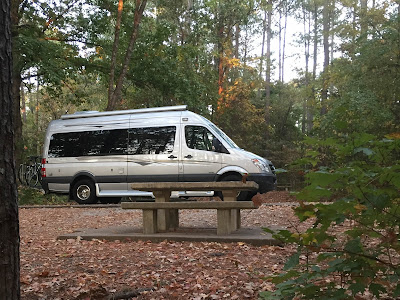
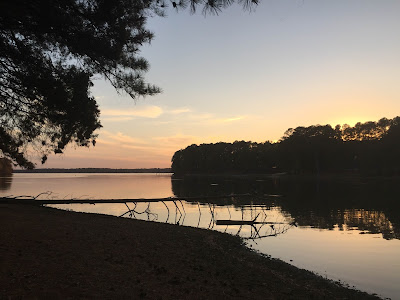
Leave a Reply